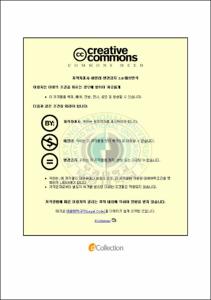Dry etching of sacrificial oxide and residueremoval using supercritical carbon dioxide
- Abstract
- In this work, we used dry etching process using supercritical carbon dioxide (scCO₂), which possesses zero surface tension, liquid like density, gas like diffusibility and environmentally benign. As a result, this green solvent is being considered for use to advantage etching of sacrificial layers (SiO₂, TEOS) with high selectivity toward SiN structural layers. Moreover, scCO₂-based solutions in wafer etching would eliminate the water-based drying step and prevent structural damage to materials in microelectronic devices. In our work, etching experiments were carried out using HF-pyridine and various cosolvents (methanol, ethanol, butanol and iso-propyl alcohol) mixture in scCO₂. The experimental parameters were changed namely concentration of etchant, kind of cosolvents and changing the experimental conditions. Also, we developed a two chamber etching reactor (e.g. etching chamber and pre-chamber) that could provide better efficiency. The pre?\chamber is designed for pre-treating the etchant as per demanded by the samples. We measured the etching rate, selectivity and uniformity for BPSG and SiN under various experimental parameters and found improved results. Finally, our developed etching method might have a great beneficiary in microelectronic industry in case of silicon wafer and in surface micro-machining for the release of component parts in micro?\electromechanical system (MEMS) devices. Further more, to meet the challenges posed by shrinking future sizes, a novel cleaning technology for removing sacrificial oxide residue from semiconductor wafer is introduced. In the key excitement in this paper is we introduced specifically formulated surfactants (which must be compatible with the acidic residues produced in the wafer) along with polar solvent can be added in small amount into CO₂ to form water in CO₂ (w/c) microemulsion in the circulated chamber system to perform sacrificial oxide residue removal. In a typical experiment, we introduced a specially designed surfactants into water in CO₂ microemulsion. The surfactants create a nanometer scale heterogeneous system of discrete polar microdomains dispersed in a continuous phase of non polar CO₂. The surfactants added to CO₂ have a polar head group that points inward and a CO₂-philic tail that forms micells, which remove process residue. Cleaning with scCO₂ is a ‘dry in - dry out’ process technology, consisting of a cleaning and a rinsing /drying step performed in the same chamber. A novel approach to clean single wafer with supercritical carbon dioxide process has been described. A major benefit of this process is from an environmental perspective. It allows dramatic reductions in water and chemical consumption while enabling achievement of the ITRS (International Technology Roadmap for Semiconductors) goals.
- Issued Date
- 2008
- Awarded Date
- 2008. 2
- Type
- Dissertation
- Publisher
- 부경대학교 대학원
- Alternative Author(s)
- Jung, Jae Mok
- Affiliation
- 부경대학교 대학원
- Department
- 대학원 이미지시스템공학과
- Advisor
- 임권택
- Table Of Contents
- 1. 서론 = 1
1.1초임계 이산화탄소의 특성 = 1
2. 이론적 배경 = 3
2.1이산화탄소용 계면활성제 = 12
2.2연구의 목적 = 15
3. 실험 = 17
3.1 시약 = 17
3.2 실험방법 = 18
3.2.1 One chamber system에서의 etching = 18
3.2.2 Two chamber system에서의 etching성능 = 19
3.2.3 W/C emulsion에 의한 에칭 잔여물 제거 = 21
4. 결과 = 24
4.1습식 식각에따른 경향성 = 24
4.2 One chamber system에서의 etching = 26
4.2.1 Cosolvent 사용과 온도변화에 따른 etching = 26
4.2.2HF/Py ratio변화에 따른 SiO2와 SiN의 etching = 29
4.2.3Cosolvent변화에 따른 SiO2와 SiN의 etching = 32
4.3 Two chamber system에서의 etching = 36
4.3.1 HF/colvent사용에 따른 etching = 36
4.4 System변화에 따른 etching 잔여물 제거 = 47
4.5 W/C microemulsion에 의한 etching잔여물 제거 = 49
5. 결론 = 57
Reference = 59
- Degree
- Master
- Files in This Item:
-
-
Download
 Dry etching of sacrificial oxide and residueremoval using supercritical carbon dioxide.pdf
기타 데이터 / 1.76 MB / Adobe PDF
Dry etching of sacrificial oxide and residueremoval using supercritical carbon dioxide.pdf
기타 데이터 / 1.76 MB / Adobe PDF
-
Items in Repository are protected by copyright, with all rights reserved, unless otherwise indicated.